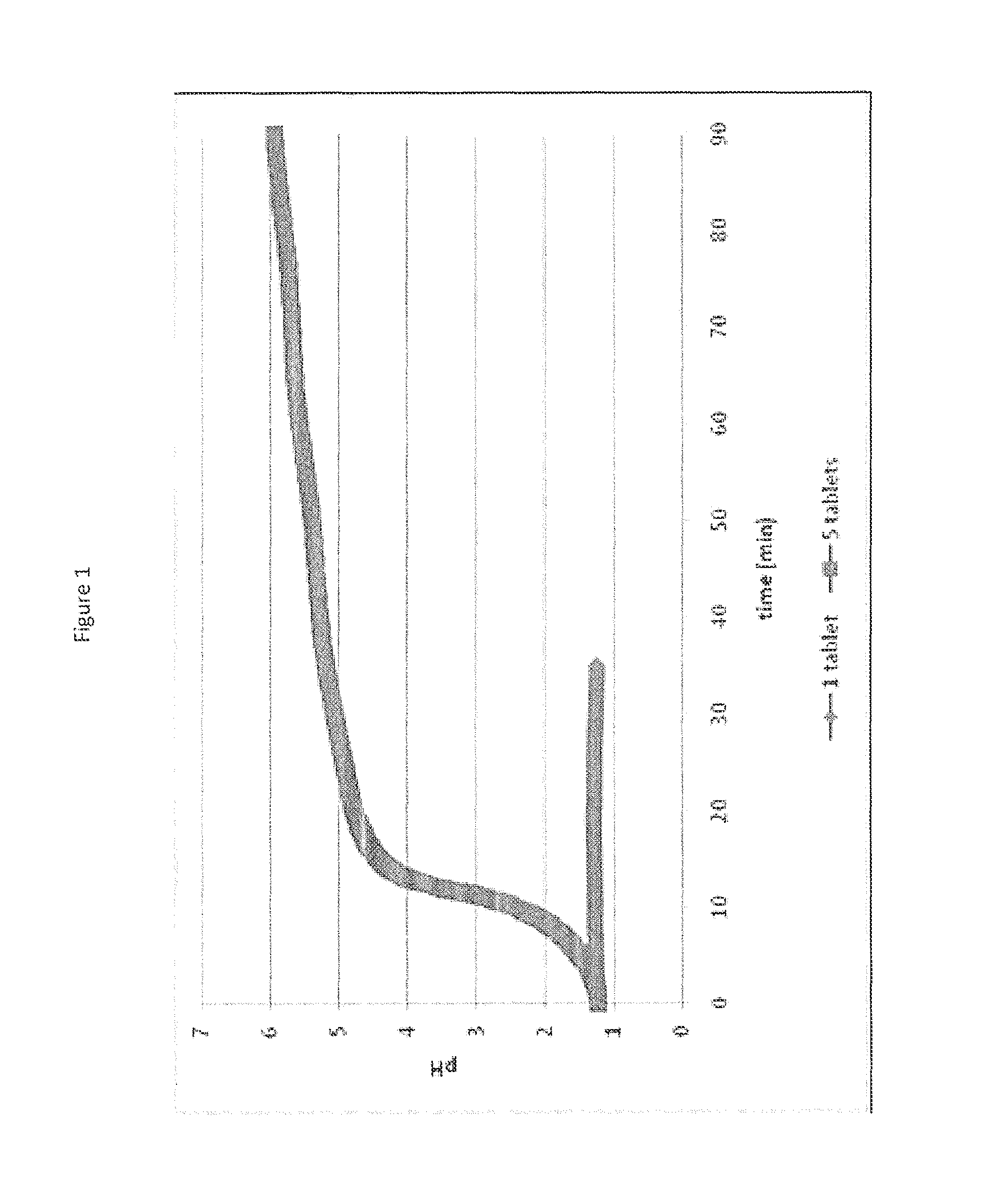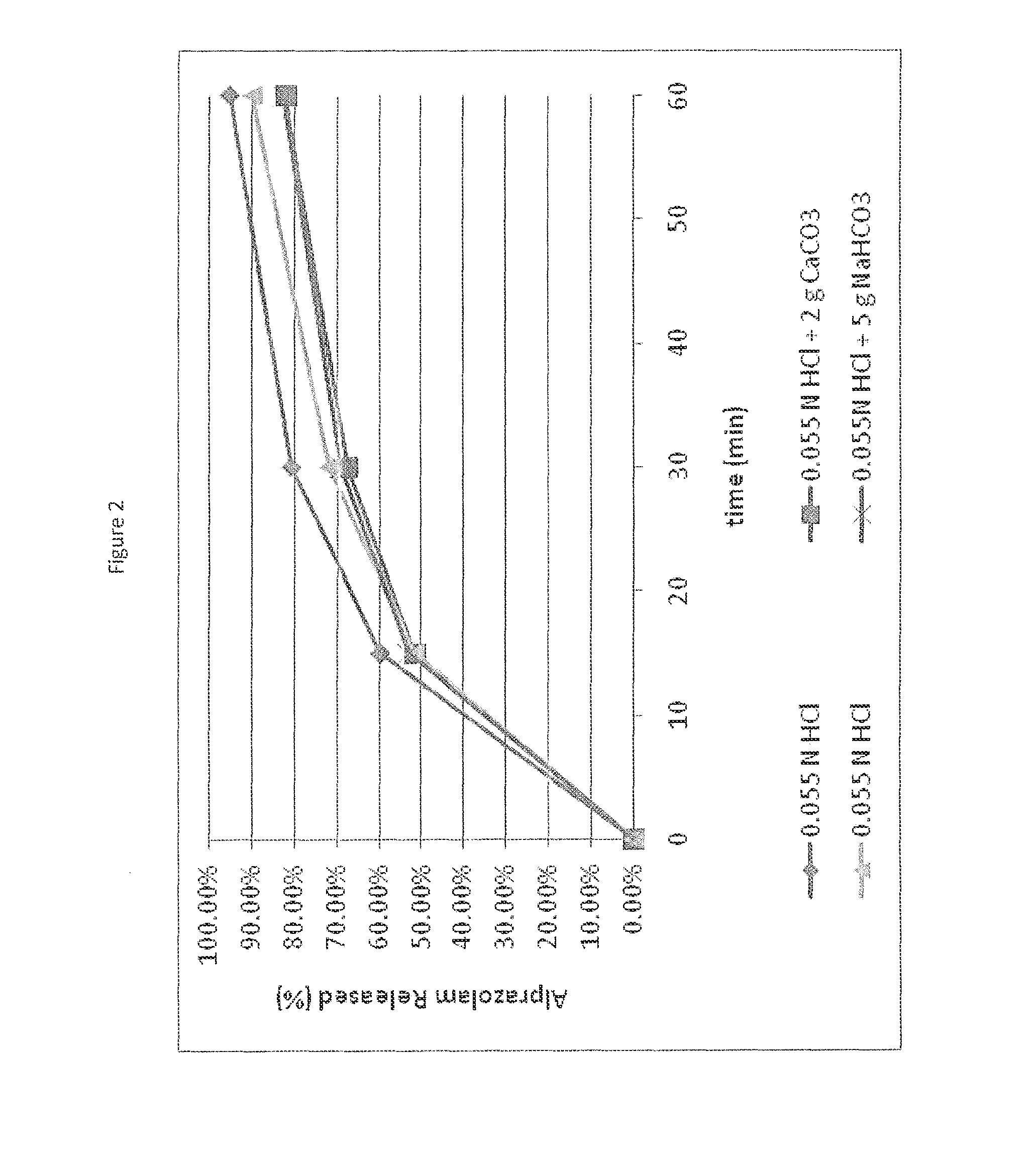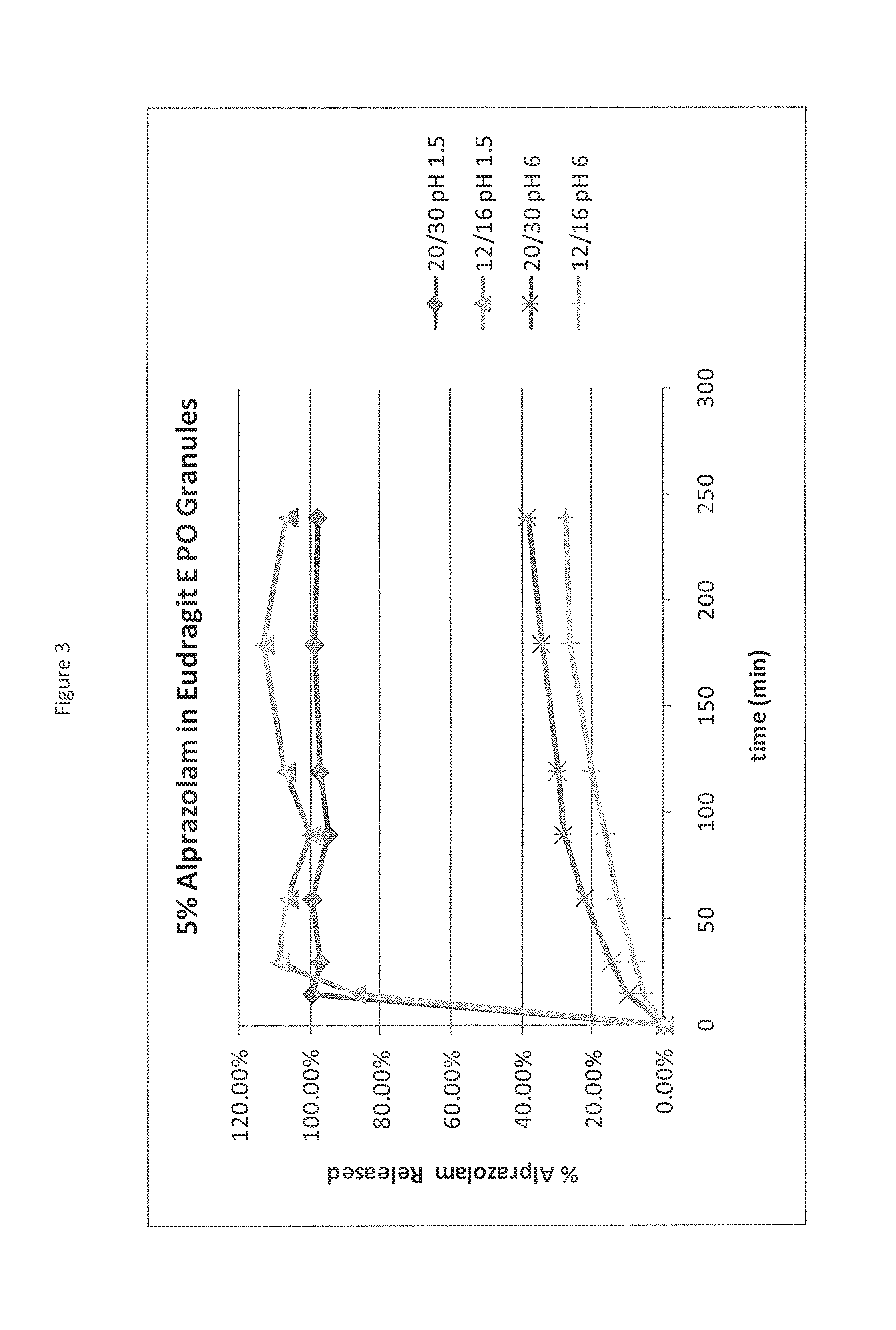Methods and compositions for self-regulated release of active pharmaceutical ingredient
a technology of active pharmaceutical ingredients and compositions, which is applied in the direction of drug compositions, biocides, organic non-active ingredients, etc., can solve the problems of increasing misuse and abuse of pharmaceutical products, possible changes in their pharmacological effects,
- Summary
- Abstract
- Description
- Claims
- Application Information
AI Technical Summary
Benefits of technology
Problems solved by technology
Method used
Image
Examples
example 1
[0066]Two dissolution vessels were prepared: one vessel contained 25 mEq of HCl and a single commercially available calcium carbonate antacid tablet (Tums®), and the other vessel contained 25 mEq of HCl and five calcium carbonate antacid tablets. The pH in each vessl was monitored and the results are shown in FIG. 1. For the single tablet, the tablet is completely reacted in about 30 minutes and the dissolution of the single tablet showed no change in pH. However, the introduction of five tablets results in a relatively rapid rise in 10 minutes to a pH greater than 4.5 and after 90 minutes, a considerable amount of non-dissolved solid was observed in the vessel. Therefore, it has been shown that calcium carbonate at a low level (500 mg) could completely dissolve with little effect on pH but with excess amounts of calcium carbonate a rapid pH increase occurs creating a high pH environment, in which calcium carbonate exhibits low solubility. Calcium carbonate has shown a capability as...
example 2
[0067]A challenge faced in designing a self-regulating dosage form is to institute regulation (i.e., slower or incomplete release) at elevated pH without compromising the desired rapid release rate associated with immediate release tablets when a single dose is taken. Calcium carbonate was evaluated both in direct blend matrix tablets and dry granulation tablets containing alprazolam, where the granule contained calcium carbonate to control drug release and calcium carbonate outside the granule to effect pH change. Both approaches resulted in slower alprazolam release in single tablets at higher pH (approx. pH 6) compared to low pH (pH1), however, in this case the release separation was not as high as desired (FIG. 2). However, the results demonstrate that a granule may be used to control drug release depending on pH environment. The granules may consist of the drug along with a functional component that inhibits erosion or disintintegration at elevated pH such that slower and / or im...
example 3
[0068]Eudragit® E PO (EPO) is a cationic copolymer based on dimethylaminoethyl methacrylate, butyl methacrylate, and methyl methacrylate. Technical literature indicates that this polymer is soluble in acid, up to pH 5; above pH 5 it swells rather than dissolves. Dry granulations containing 5% alprazolam in EPO polymer were prepared and size fractions collected at −16 mesh and +20 mesh ( 16 / 20) and at −20 mesh and +30 mesh ( 20 / 30). Dissolution on the granulation size fractions were performed at both low pH (pH 1.5) where EPO is soluble and at high pH (pH 6) were EPO is less soluble. The results are shown in FIG. 3. At low pH, irrespective of the particle size, a rapid and complete release of alprazolam occurs within 15 minutes. However at high pH, the release of alprazolam is significantly slower and incomplete for both size fractions but slightly elevated for the smaller fraction. It must be noted that this dissolution simulation represents a static pH condition at the potential pH...
PUM
 Login to View More
Login to View More Abstract
Description
Claims
Application Information
 Login to View More
Login to View More - R&D
- Intellectual Property
- Life Sciences
- Materials
- Tech Scout
- Unparalleled Data Quality
- Higher Quality Content
- 60% Fewer Hallucinations
Browse by: Latest US Patents, China's latest patents, Technical Efficacy Thesaurus, Application Domain, Technology Topic, Popular Technical Reports.
© 2025 PatSnap. All rights reserved.Legal|Privacy policy|Modern Slavery Act Transparency Statement|Sitemap|About US| Contact US: help@patsnap.com



